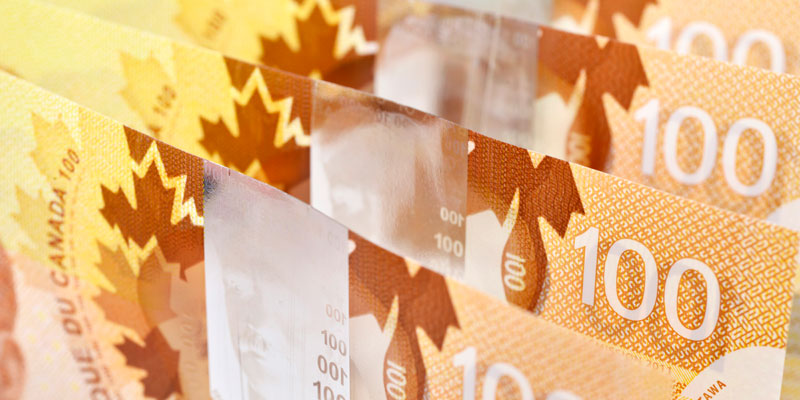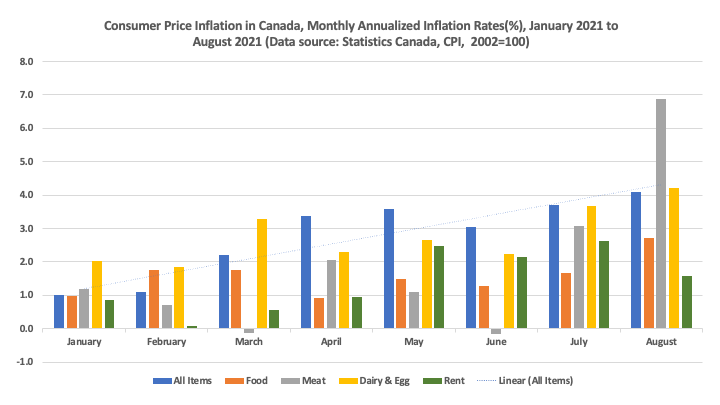Transitory or not, here comes inflation

Inflation appears to be picking up steam in Canada as measured by the Consumer Price Index (CPI). As the chart below illustrates, the All-Items CPI shows an annualized monthly inflation rate of 1 per cent in January of 2021, which rose to 3.4 per cent by April and in August had reached 4.1 per cent. In the span of eight months, the inflation rate quadrupled. While there’s substantial economic debate as to whether this is transitory or not, the fact remains there has been a substantial bump in inflation rates and the increase varies across commodity groups.

While the overall rate of increase in August was 4.1 per cent, food overall was at 2.7 per cent, meat was at 6.9 per cent. Dairy products and eggs were at 4.2 per cent and rent was at 1.6 per cent. For All-items excluding food, the rate was 4.4 per cent in August while for food and energy combined it was 7.7 per cent. Indeed, if one takes only gasoline prices, they were up 33 per cent in August 2021 compared to August 2020 though some of this represents a rebound from the price declines that occurred during the pandemic year previous.
However, the increases for food, meat and dairy come on top of other increases that also occurred in 2020. While the annualized monthly average All-Items inflation rate for 2020 was below one per cent, food was at 2.3 per cent, meat was at 4.6 per cent and dairy products and eggs at 3 per cent. In other words, daily life for many Canadians has become much more expensive over the last few years. Even if the inflation rate subsides to a more historical range of 2 per cent that has characterized the last two decades, there has been a permanent increase in the level of prices that will influence consumer purchasing power for some time to come.
Of course, the big question is whether this is transitory inflation. The answer, to a certain extent, depends on what is causing the inflation. Supply chain disruptions are a factor as is the pent-up demand by consumers given the accumulated pandemic pool of savings. There is also the demand stimulus by government in terms of spending on assorted individual and business income supports. Add to all this a labour shortage and you have all the necessary demand and supply side shocks needed to start an inflation. However, for inflation to continue it must be either be fuelled by expectations of continuing inflation on the demand side or monetary accommodation by government.
Here the fiscal expansion fuelled by debt and monetary expansion via central bank acquisition of federal debt is obvious as since the fourth quarter (Q4) of 2019, the gross debt of general government in Canada has grown from $2.45 trillion to reach $3.09 trillion—an increase of 26 per cent. From Q4 of 2017 to Q4 2019, the increase was only 5 per cent. This has been accompanied by massive expansion of the monetary base and the growth of monetary aggregates for much of 2020. Given the supply disruptions, this is a case of ultimately too much money chasing too few goods. If consumers grow to expect inflation, then anticipatory panic-buying to avoid future price increases, combined with demands for higher wages and compensation, will then feed back into both the demand and supply sides and continue inflation.
In the end, transitory or not, inflation has been taking a bite out of Canadian wallets and the prospects currently for a winding up of inflation are uncertain. What happens the next few months will provide a better indicator of whether inflation will soon subside.

